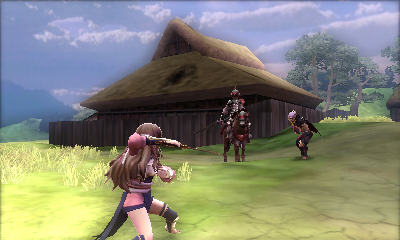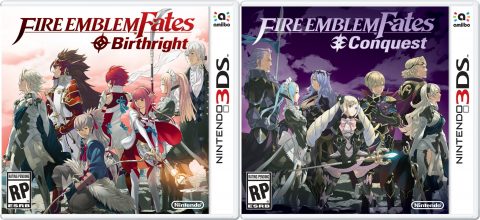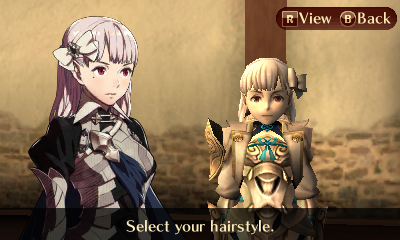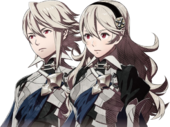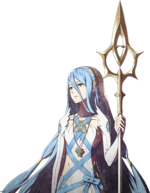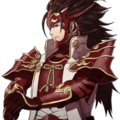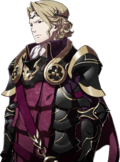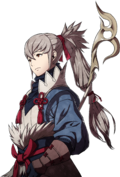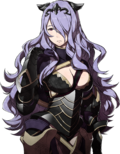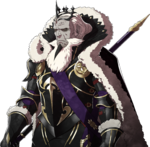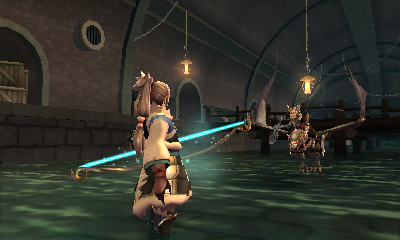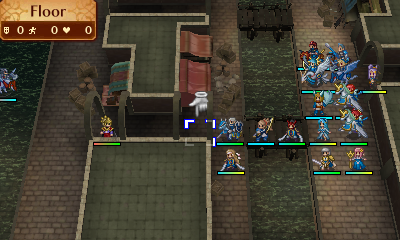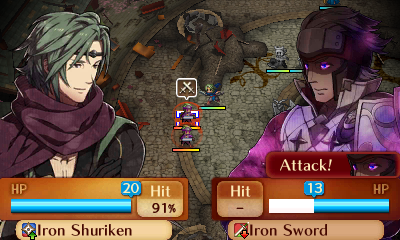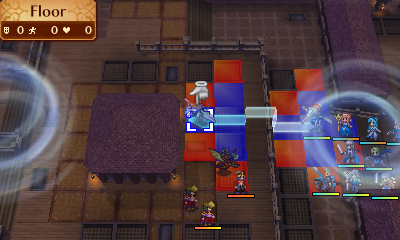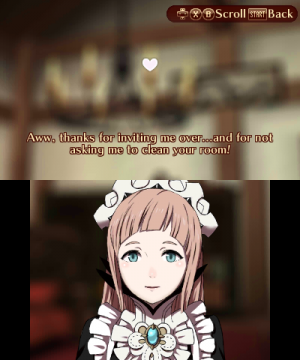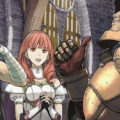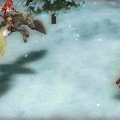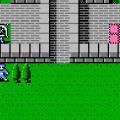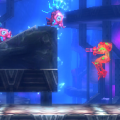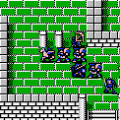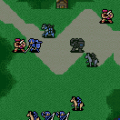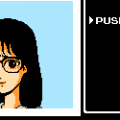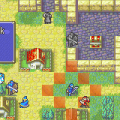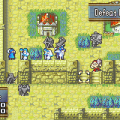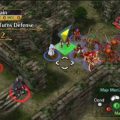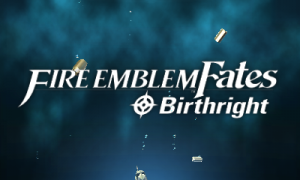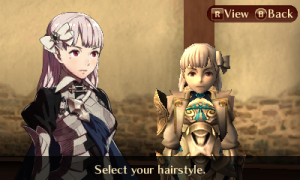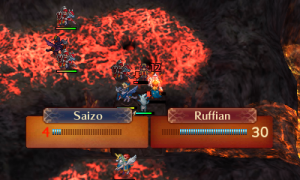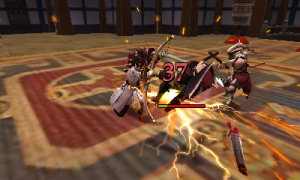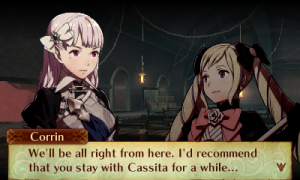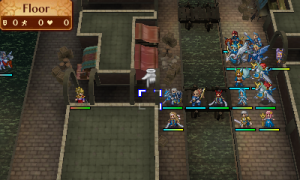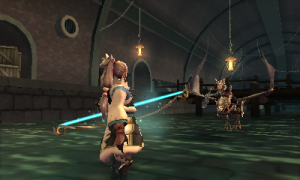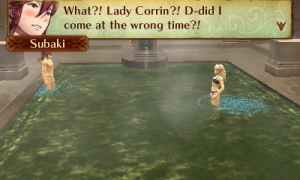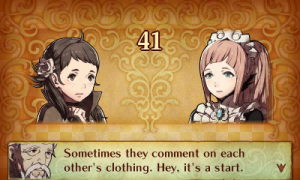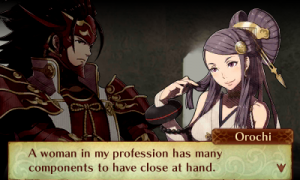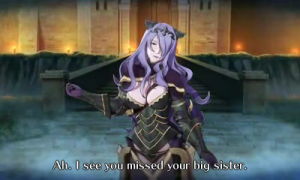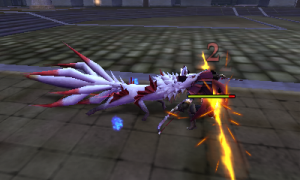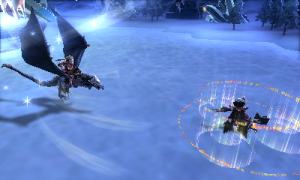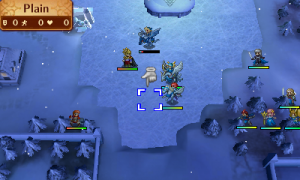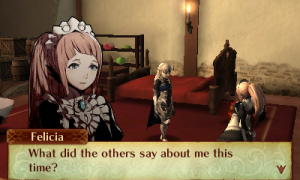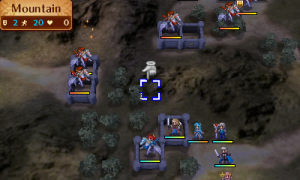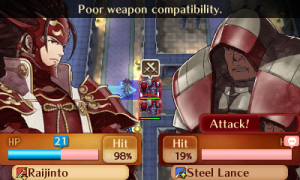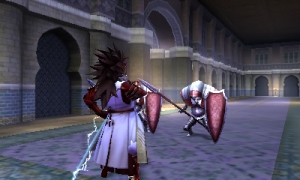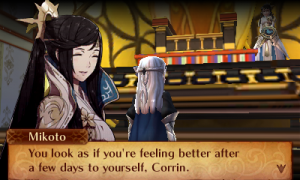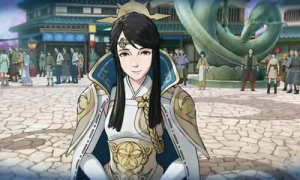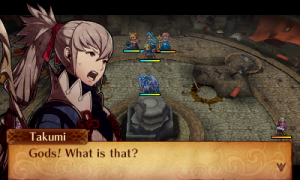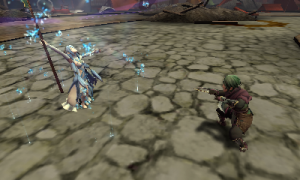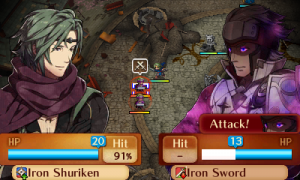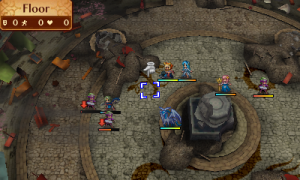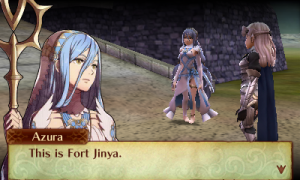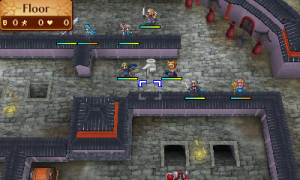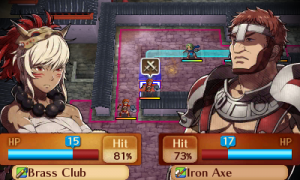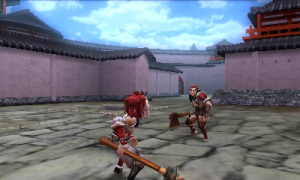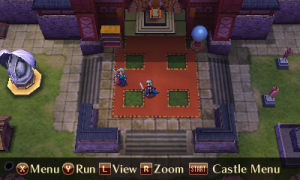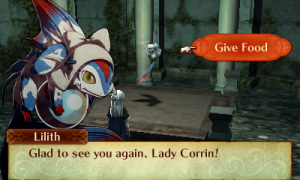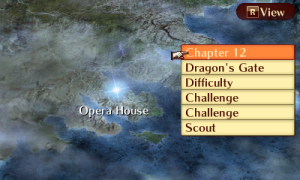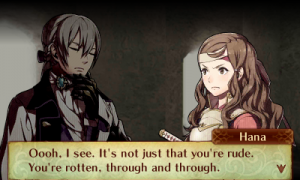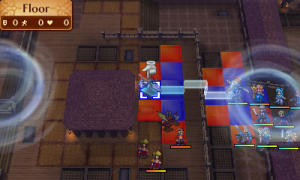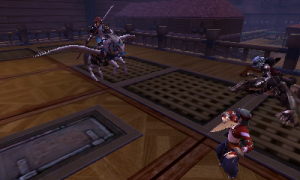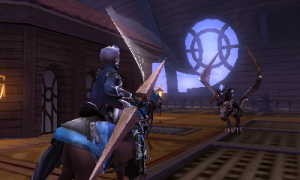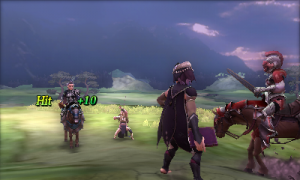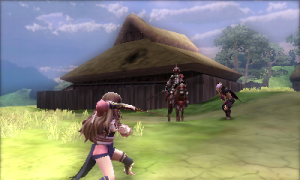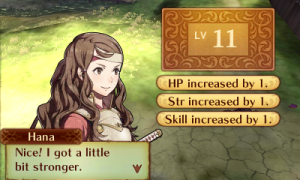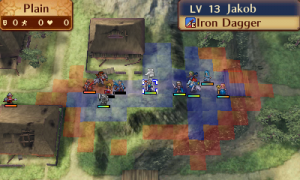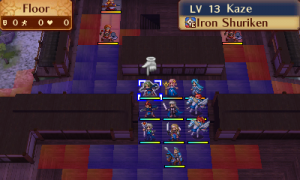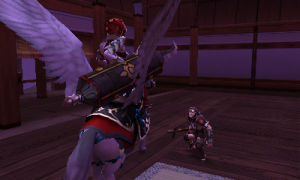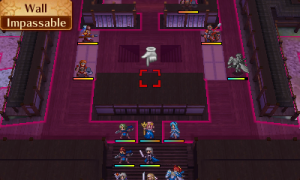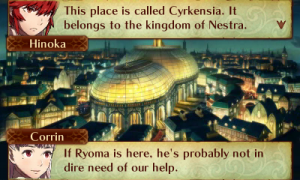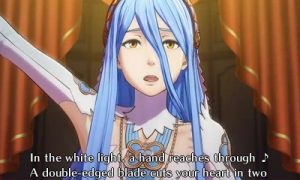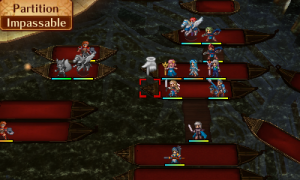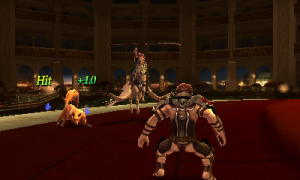- Fire Emblem (Introduction)
- Fire Emblem: Ankoku Ryu to Hikari no Tsurugi
- Fire Emblem Gaiden
- Fire Emblem: Monshou no Nazo
- Fire Emblem: Seisen no Keifu
- Fire Emblem: Thracia 776
- Fire Emblem: Fuuin no Tsurugi
- Fire Emblem (GBA)
- Fire Emblem: The Sacred Stones
- Fire Emblem: Path of Radiance
- Fire Emblem: Radiant Dawn
- Fire Emblem: Shadow Dragon
- Fire Emblem: Shin Monshou no Nazo
- Fire Emblem Awakening
- Fire Emblem: Fates
- Fire Emblem Echoes: Shadows of Valentia
- Fire Emblem (Misc)
Three years after the success of Awakening’s launch, Nintendo and Intelligent Systems released Fire Emblem: Fates in 2015 in Japan and early 2016 in the west. Fates marked a series first, where the game was released in two editions: Birthright and Conquest. The simplest comparison to make is with Pokemon, but that would not do justice to how different Fates’ two versions actually are.
Fates’ story is entirely predicated on the player’s decision to choose which army he or she will fight for. Once again the player is represented by a customizable avatar character, whose default name is Corrin. Corrin, like Robin from Awakening, has a well-established personality that the player has little input in altering, and perhaps to an even greater degree.
Both games start with six identical chapters, in which the player is introduced to both of the nations on this nameless continent: Hoshido and Nohr. Chapter 6 features the first of many clashes between the two powers, and it’s here that Corrin must make his or her decision as to who to fight for. In truth the player is locked into the path that he or she committed to when buying the game: those who purchased Birthright will side with Hoshido, and those who bought Conquest shall side with Nohr. Luckily, the other route not included in the cart can be purchased as DLC for half the price of the original game. This choice is one that the majority of players will want to decide based on gameplay rather than story, however.
Characters:
Corrin
The player’s avatar, Corrin (or whatever name is decided upon) must decide whether to side with his unfamiliar bloodline or the family that raised him. He/she will ultimately be looking for a way to fight for the greater good, but the means with which this is done vary drastically depending on the route chosen.
Azura
Azura’s situation is like Corrin’s but reversed. She was born in Nohr, but raised in Hoshido, alongside the latter’s royal family. A mysterious songstress who seems to know more about what’s really going on than anyone else, Azura will end up following Corrin regardless of which path the player decides to follow.
Ryoma
Hoshido’s high prince, next in line to be king, and Corrin’s elder brother. Ryoma is one of the most formidable warriors in the land, wielding his personal lightning sword Raijinto.
Xander
Xander is Ryoma’s counterpart in the Kingdom of Nohr. While his country appears have the moral low ground, Xander is honorable and stoic. He wields Siegfried, which like Raijinto can attack from range.
Takumi
Takumi is Hoshido’s hateful young prince. He despises Nohr and all of its people, and is extremely wary of Corrin. He plays a major role, especially in Conquest, and wields the bow Fujin Yumi, which allows him to attack from close range and gives him the ability to pass through terrain without hindrance.
Camilla
Camilla is the eldest princess of Nohr. Much of her personality is defined by the way she dotes on her adoptive sibling Corrin, but she’s a powerful fighter as well. She doesn’t wield a special weapon, but Camilla is arguably one of the most helpful allies should the player side with her thanks to her amazing base stats and incredible mobility that results from riding a wyvern.
Mikoto
Hoshido’s reigning queen and Corrin’s birth mother. She’s also a widow, having lost her husband to King Garon of Nohr.
Garon
Nohr’s terrifying king and Corrin’s adoptive father. He is unquestionably evil, but his children are reluctant to turn on their father.
Unfortunately for the game’s narrative, Fates puts forth little to no effort in making this decision difficult from a moral standpoint. Hoshido is clearly the good kingdom, and Nohr is obviously bad. There is a certain appeal in being able to fight for the bad guys, but for players looking for a story with realistic moral ambiguity, this is a disappointment.
And yet there is a very good reason to side with Nohr, even if it feels wrong. Nintendo and Intelligent Systems were surprisingly receptive the Awakening’s criticisms despite the game’s overall massive success, and Fates is an attempt to appeal to both new and old fans alike. Birhtright emulates the more simplistic nature of the gameplay found in Awakening: maps are spacious, objectives are straightforward, and the game is much easier than Conquest – so much easier that Birhtright’s hardest difficulty – Lunatic – is unquestionably less of a challenge than Conquest’s middle difficulty – Hard. Conquest, likewise, features intricate maps that require careful planning, varied objectives such as “Defend” and “Escape”, and is ruthlessly tricky at times. Conquest also doesn’t feature any overworld encounters with which the player can farm experience, much like the all of the Fire Emblem games outside of Gaiden, Sacred Stones, and of course Awakening.
Both games see marked improvements over Awakening’s gameplay and mechanics. Pair-Up is back, but it’s hardly recognizable. In Awakening, the second unit in a pair received a chance to follow up with an additional attack as well as block an enemy’s strike, with the percentage for this to occur being dependent on the units’ combined stats. While Fire Emblem has always been a series about weighing the odds and occasionally hoping for a little bit of good luck, Awakening’s system added another layer of chance that many felt lessened the amount of actual strategy. Fates completely overhauls this system, and splits the attack and defense support options into separate mechanics, or rather, stances. Attack Stance is used to have an ally deliver an addition blow during combat. This is done by having said ally adjacent to the unit (NOT paired up) at the start of battle, and is 100% guaranteed to occur if these conditions are met. The only way to prevent this from happening is to battle two adjacent enemy units with a unit of the player’s own who is in Guard Stance. Guard Stance is like Pair-Up from Awakening, as two units once again occupy the same space, with the second unit providing stat bonuses to the first based on their support level. Guard Stance is both more limited and predictable, however. The second unit will always block any additional attacks provided by the enemy’s Attack Stance, but they also will never follow up with an attack of their own (that’s what Attack Stance is for). Furthermore, a unit in Guard Stance has a shield gauge that fills with each strike performed in combat. Once this meter is completely filled, the next attack received will automatically be blocked completely. While it can be difficult to time, since the player is forced to activate the block as soon as the gauge is filled, this adds a new layer of depth that can be utilized to handle difficult situations.
Though it’s been alluded to thus far, it’s worth explicitly stating that yes, the enemy AI can and will utilize both of these mechanics, unlike in Awakening where Pair-Up was exclusive to the player. The changes made provide a level of predictability that allowed the developers to put these abilities in the hands of the computer, something that would have been disastrous for Awakening’s Pair-Up system.
While few will argue that Attack Stance and Guard Stance aren’t a total improvement over Pair-Up, they aren’t perfect either. Guard Stance is considerably better than Attack Stance, though this isn’t quite so evident until the latter half of either game. This is because units in Attack Stance don’t receive the same stat boosts that those in Guard Stance do, and since these boosts are tied to support levels, and support levels are obviously higher towards the games’ end, they become more impactful later on. Also a factor is how much more dangerous enemies in the late game are, and how invaluable both the defense against follow-up attacks and the shield gauge are to survival.
Fates’ other major mechanical change comes with how the game handles weapons. For the first time since Gaiden, weapons no longer have durability. Every sword, lance, axe, bow, dagger, and magic tome is indestructible, and can be used indefinitely. Staves are the only exception, and will disappear forever after being used a designated number of times. But more importantly, the weapon triangle has received a major update. The basic triangle (swords>axes>lances>swords) has been changed to incorporate bows, magic, and a new type of weapon class called “hidden weapons” (daggers and shuriken) that specialize in reducing enemy stats. This has been accomplished by grouping each of these exterior types with one of the original weapon classes. Magic tomes are now bundled with swords, bows go with axes, and hidden weapons join lances. This means that your sword users will receive the triangle bonus when they’re fighting an enemy with either an axe or a bow, for example. Custom weapon icons have been replaced with generic weapon class symbols to help remind the player of these changes. So every type of sword will be a basic sword symbol with a background that’s mostly red and some green at the bottom of the icon. This signifies that as a red-colored weapon, it’s superior to weapons with icons that are mostly green, which of course is the color of the axe and bow icons.
Reclassing has been touched up as well. In Awakening, Reclassing was a means of providing limitless leveling opportunities for playable characters, because changing classes always reset that character’s level back to one despite keeping most of their stat increases. In Fates this is no longer the case, and changing classes now retains the character’s level. Many long-time fans felt Awakening’s approach wasn’t in the spirit of the series, which has always placed an emphasis on the random growths of each individual level up creating a different experience for every player.
Also returning are marriage and children, which Intelligent Systems and Nintendo clearly felt was vital to Awakening’s success. But Fates features neither a time-skip like in Seisen no Keifu nor time travel ala Awakening in its plot, and as a result the children’s inclusion in particular comes off as a bit contrived. Without going into specifics, it’s plainly obvious that the mechanic was included before the story’s justification, unlike the previous two iterations that featured children.
This brings us to Fates’ next defining feature: the Astral Plane and My Castle. My Castle, as one can surmise by its name, is a sort of customizable base used by the player’s army. A few chapters into the campaign the player will be introduced to this feature, and from there they’ll have the option to visit it between every battle. My Castle is a very basic town-building simulation that also includes the many different micromanagement options Fire Emblem players have grown accustomed to. Here is where the player will build and upgrade his or her shops – these are the only stores in the game, by the way – as well as other facilities, such as a prison that houses captured enemy soldiers that can be recruited, a lottery that gives out some extra goodies, and a hot spring for, well, fanservice.
My Castle is also home to the Private Quarters, a building that houses the game’s most controversial “mechanic.” In every version of the game, when the player visits the Private Quarters, they can invite an ally to join them for an event that boosts the support level between the avatar and whoever they picked. The screen fades out, and the player is treated to a brief cutscene with enhanced animation, a closeup of the visitor’s face, and some voiced dialogue. In the western versions of the game, that’s all there is to it – after the visitor is finished speaking, the player receives the support boost. The original Japanese edition works a bit differently. Once the special animation begins, the player is tasked with a minigame of sorts that involves using the stylus to rub the face of the visitor, to which said character reacts. The mechanic remains effectively identical, but none the less this change left some fans outraged.
Finally, My Castle also served as a hub for multiplayer functionality. Players could invade one another’s castles. There is no real time, peer-to-peer option for these skirmishes, as one army is always controlled by the AI. That being said, players have an impressive amount of control in terms of setting up their army to be run by the computer, such as general AI settings, unit formations, and even the ability to pair up characters ahead of the battle. The castle itself serves as the battleground, and the invaders can and should destroy the home team’s facilities, which provide stat boosts to the defender while intact (the destructibility of buildings also prevents players from customizing their base in a way that makes it impossible for invaders to traverse). Of course, the damage is only temporary, and everything goes back to normal after the fight it finished. Players can interact this way via Streetpass or over the internet, and it’s easily the best implementation of multiplayer in the series thus far – Shadow Dragon’s head-to-head style just isn’t suited for Fire Emblem, and Awakening’s multiplayer was a more simplistic version of Fates’.
Most of the other additions and changes to Fates are less spectacular, but still worth mentioning. Many of the maps feature “Dragon Veins,” which are specific tiles that allow certain characters to alter the environment of the stage. These geographical alterations typically boil down to changing how the map as traversed, such as freezing over a lake or clearing away rubble. There are a few exceptions where the mechanic is particularly creative, like in the chapter that features wind gusts that move all units every turn and must be controlled by utilizing the Dragon Vein, but these are few and far between. Ultimately it was a creative idea that came off as a bit forced at times, seeming included for the sake of inclusion.
While Fates made many strides in addressing the complaints long-time fans had about Awakening, it also doubles down on some of its predecessor’s shortcomings. Most of the characters still cling to defining characteristics, like clumsiness, exercising, beauty, etc. that are overplayed and leave little room for depth. Corrin, as the avatar, is somehow even more worshipped by the cast than Robin was, and it often comes off as very cheap fanservice to stroke the player’s ego. Awakening’s story may have been unfocused, but Fates’ is just bad, relying on blatant stupidity and naïveté by characters for the convenience of plot advancement and lots and lots of unnecessary death and sacrifice.
The final thing that hasn’t been mentioned yet would seem like an important one: there is a third path, outside of Birhtright and Conquest, that’s available as DLC called Revelations. It is almost universally agreed that Revelations is far weaker than both Birhtright and Conquest in almost every way. In terms of plot, it lazily scraps together a way for both sides to unify against a greater evil, spitting on the initial premise of the other games’ plots that are entirely defined by the fact that they pit you against half of the game’s cast. The gameplay tries to find a middle ground between the two styles of the original paths, but fails in appealing to either side. Revelations allows the player to grind for EXP and resources like in Birhtright, but includes maps that are even more gimmick-focused and frustrating than the ones in Conquest. Finally, while this path does allow the player to recruit virtually every character from both Hoshido and Nohr, these characters are so numerous that they’re grossly unbalanced, with several units joining severely underlevelled with no hope of contributing.
Fire Emblem: Fates is an entry that tries to appeal to everyone, and to be fair, in many ways it succeeds. While the story and characters are an embarrassment to the franchise, the gameplay is top-notch, and offers options for new and old fans alike. But it would be naïve to completely dismiss the flaws of the narrative and dialogue, as Fire Emblem is a series that holds those things dear. Yet the gameplay is so well thought-out, especially in comparison to Awakening, that Fates deserves to be respected, whether you started your Fire Emblem journey with Marth, Lyn, or Chrom.
